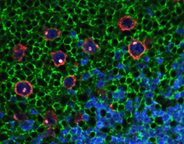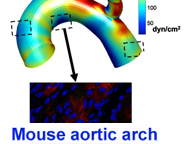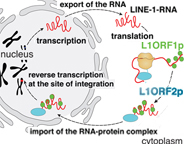 |
 |
|||||||
| July 15, 2010 | Research Extras
The WHSC research website includes discoveries, research highlights, and access to focused topics. Need facts and figures on WHSC finances, faculty, research and health care? Use the Comprehensive Figures webpage as your reference tool. Research Highlights features historical and current discoveries, national research leadership, and funding. Listen to archived Sound Science podcasts. Emory Health Now blog includes updates and perspectives on research, health care, education, and community, with videos and web links. View current and archived news releases from the WHSC. View the WHSC on facebook. Find us on Twitter |
|||||||
| Bali Pulendran, PhD |
||||||||
| |
||||||||
| Sound Science: Your Immune System Calls the Shots Listen to Sound Science as vaccine researcher Bali Pulendran describes the intricacies of your immune system and its remarkable ability to distinguish among unique invading pathogens. Read more. . . |
||||||||

Reed-Sternberg cells are seen with red outlines. |
||||||||
| Multicolor Quantum Dots Aid in Cancer Diagnosis Fluorescent nanoparticle quantum dots make ideal tools for identifying rare cancer cells in tissue biopsies. Multicolor quantum dots linked to antibodies can distinguish the Reed-Sternberg cells that are characteristic of Hodgkin's lymphoma. They also could eventually be used to detect other rare cell types. Read more. . . |
||||||||
|
LMO4 gene is turned on in curved part of the aorta |
||||||||
| To Predict Atherosclerosis, Follow the Disturbed Blood Flow Atherosclerosis begins in branched or curved regions of arteries where blood flow is low and erratic. Disturbed blood flow causes protective genes to turn off before dangerous plaques and disease even appear. Aerobic exercise promotes constant, smooth blood flow, healthy vessels, and activation of protective genes. Read more. . . |
||||||||
| "Jumping Genes" Are a Common, But Risky Instability Transposons, or "jumping genes," are much more common than prevously believed. In fact, every newborn is likely to have a new transposon. Transposons resemble e-mail spam: short repeated sequences with no obvous function other than making more of themselves. But many transposons interrupt genes and contribute to diseases. Read more. . . |
||||||||
| Low Vitamin D Levels May Be Risk for Parkinson's Disease Low vitamin D levels may help predict whether someone will later develop Parkinson's disease. A new study showed people with the lowest levels of vitamin D were three times more likely to develop the movement disorder. More research may help determine whether vitamin D can help protect against Parkinson's or protect the neurons that are gradually lost in Parkinson's patients. Read more. . . |
||||||||
 |
 |
|||||||



